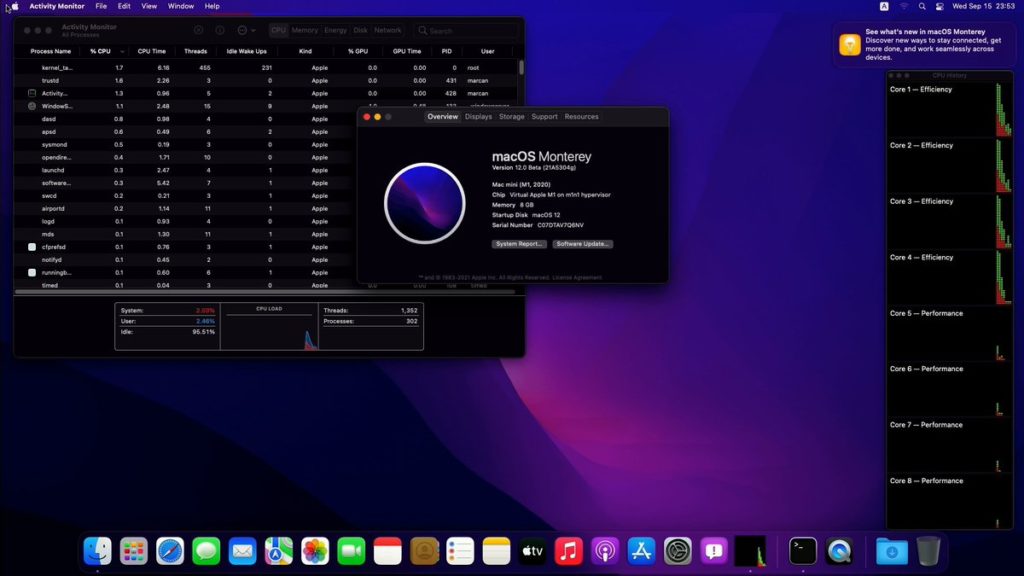Asahi Linux for Apple Silicon is now available to the general market. It is the first Linux distribution to support Apple M1 processors natively. Because this is an alpha release, please be aware that there may be some minor errors and features that are missing. However, now that this important milestone has been achieved, the Asahi Linux development team assures that “things will move much more quickly going forward.”
Asahi is more than a beer. It’s the Japanese term for “rising sun,” so it’s a fitting name for a groundbreaking Linux version for Apple Macs with M1 processors. In a blog post, the development team stated, “We’re incredibly excited to finally take this step and start offering Linux on Apple Silicon to everyone.” Importantly, you don’t need a jailbroken device to install Asahi Linux on your Mac. Furthermore, it will have no effect on the security level of your macOS installation, allowing you to keep using Mac features like FileVault, operating iOS apps, and streaming Netflix in 4K.
Despite the fact that the team has released a list of system requirements, an installation guide, and a list of (in)compatible features, this alpha release is primarily aimed at “developers and power users.” In other words, the developers openly state, “expect things to be a little difficult.”
You’ll need an M1, M1 Pro, or M1 Max system (Mac Studio excluded) with MacOS 12.3 or later and at least 53GB of free space for the desktop install to run Asahi Linux Alpha right now. You’ll have access to the Asahi Linux Desktop after running the installer, which will guide you through activities like expanding your macOS partition (if necessary) and installing your new OS.
“Customized remix of Arch Linux ARM that comes with a full Plasma desktop and all the fundamental packages to get you started with a desktop environment,” according to the description. It also comes with a setup wizard to help you get your machine up and running. There are also choices for a basic Asahi Linux installation and a UEFI-only installation (so you can boot an OS installer from a USB-connected drive). The installation sets up dual-boot mode by default, allowing you to switch back to macOS whenever you choose.

Understandably, and given a big red flag by the developers, there are some significant wrinkles with Asahi Linux Alpha. There are a large number of Mac I/O, and hardware features that don’t yet work, and the most important of these are:
- DisplayPort
- Thunderbolt
- HDMI on the MacBooks
- Bluetooth
- GPU acceleration
- Video codec acceleration
- Neural Engine
- CPU deep idle
- Sleep mode
- Camera
- Touch Bar
The foregoing, however, is weighed against the developers’ tremendous effort in getting this Linux distribution up and running with support for things like Wi-Fi, USB, NVMe, screen, power, keyboard, Ethernet (desktops), battery information, and more.
Some apps are also having issues with the OS’s alpha release. Chromium, for example, does not work, and Emacs has difficulties. Other programmes that use jemalloc and libunwind will not work correctly in this initial Alpha version, but a fix is already in the works.
Also Read:
AMD’s Radeon Technology Group is hiring RISC-V engineers for future projects








